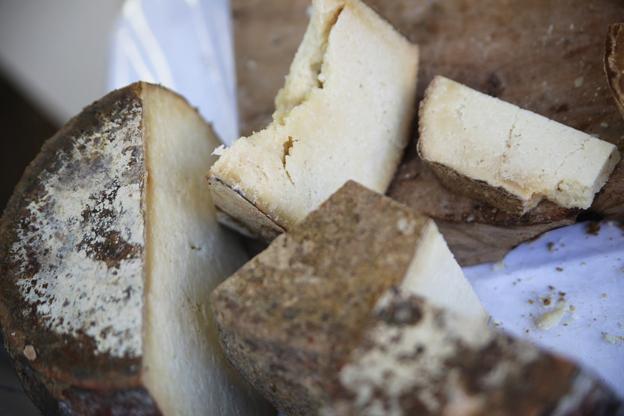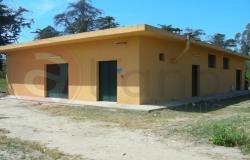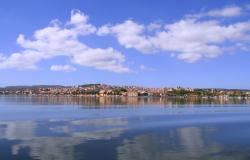Fiore sardo is Sardinia’s signature cheese, now a Slow Food presidium, established to protect the ancient traditions of Sardinian shepherds, the first artisanal producers of this formaggio said to date back to the Bronze age.
It is the typical sheep product of the inland areas of Sardinia, especially around Nuoro and the mountainous area of Barbagia.
The name ‘Sardinian flower’ seems to derive from the original use of the cardoon flower as rennet, although it may also be due to the fact that, in the past, wooden molds of wild pear or chestnut were used to make the cheese; on the bottom of these molds a flower was carved. Each producer and, in some cases, even each town was recognizable thanks to this stamp.
Fiore sardo is made from the milk of Sardinian sheep. The aging takes place in three phases. During the first phase, it is put next to a brazier for two weeks. Shepherds use wood fire in order to give it a slightly smoked taste. Then the cheese is transferred to a different space, where it is left to age for at least 90 days. Finally, it is brought to the aging cellars where it is washed and rubbed with a mixture of wine vinegar, olive oil and salt and then left to age for another three months at least, during which time it is turned frequently.
Fiore sardo is a fat cheese, with intense smells and aromas. It should be eaten as a second course, or at the end of a meal. It pairs well with Cannonau and Malvasia di Bosa, both excellent Sardinian wines.
The Slow Food Presidium was established to safeguard these traditional, artisanal production methods still surviving in a few small towns in the Barbagia area. The farmers here cannot compete with industrial producers in terms of quantity output, but the quality of their fiore sardo is unequalled.



